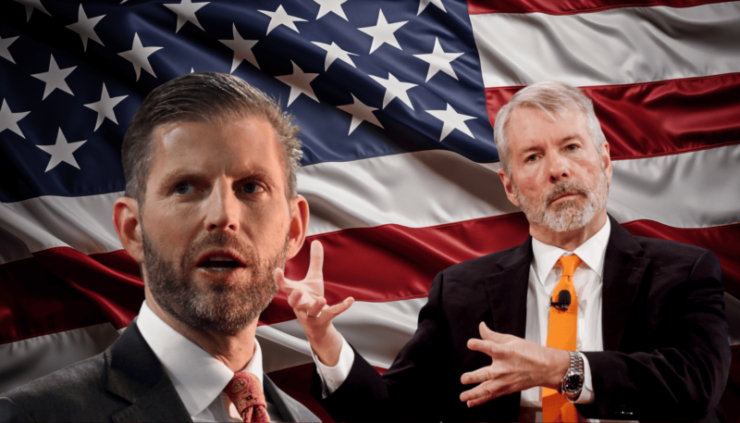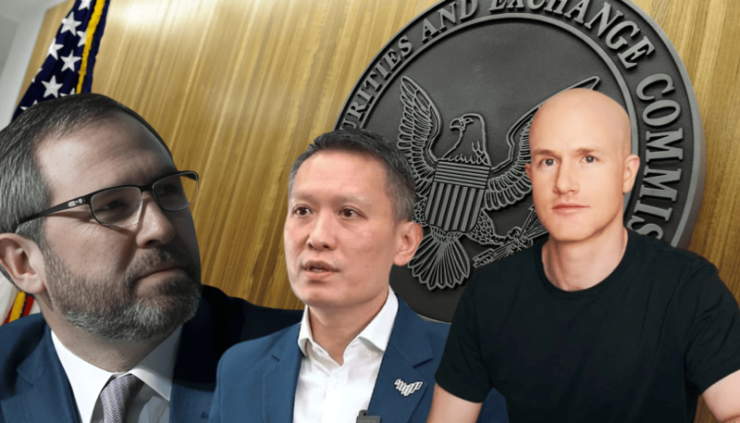When Donald Trump returned to the White House, the crypto industry expected fireworks. But few could have predicted just how far and fast the Trump administration would move to position the U.S. as the global leader in digital assets.
In less than 100 days, Trump has not only delivered on his campaign promises to embrace cryptocurrency—he’s shattered expectations. From launching executive orders and strategic Bitcoin reserves to appointing unapologetically pro-crypto regulators, Trump’s policies have reshaped the crypto landscape in record time.
But while the entire crypto space is celebrating, it’s clear that the biggest windfalls won’t be spread evenly. The real beneficiaries? Heavyweights like Wall Street giants, crypto venture capital firms, DeFi powerhouses, and seasoned day traders—those with the capital, reach, and infrastructure to seize the moment.
Names like BlackRock, Fidelity, Tether, Coinbase, Strategy, Metaplanet, and others aren’t just riding the wave—they’re positioned to dominate in this new era of U.S. crypto leadership.
But just how much does each of these players stand to gain? In this feature, we break down exactly how Trump’s aggressive policies have set the stage for each of these powerhouses to thrive and why the stakes have never been higher.
Trump’s Pro-Crypto Initiatives
Shortly after his inauguration, President Trump signed an executive order titled “Strengthening American Leadership in Digital Financial Technology,” signaling a commitment to fostering innovation in the crypto space.
Subsequently, he established a Strategic Bitcoin Reserve, described by venture capitalist David Sacks as a “digital Fort Knox,” starting with an estimated $17 billion in Bitcoin acquired through legal seizures.
Shortly after that, the administration hosted the first White House Digital Asset Summit, marking a significant shift in political attitude toward cryptocurrencies. This event featured some of the big names in crypto, from core Bitcoiners like Saylor, Armstrong and the Winklevoss twins, to regulators like CFTC’s Caroline Pham, the SEC’s Hester ‘Crypto mom’ Pierce; the event brought together, all the catalysts needed to “make America the Crypto Capital of the world.”
Further demonstrating his personal engagement with digital currencies, President Trump launched his own memecoin, $TRUMP in January, a milestone event which though marked controversial by many within and outside the crypto industry, propelled bitcoin to its current all time high of $109,000. Trump also introduced World Liberty Financial, a platform aimed at enhancing financial inclusion through blockchain technology.
Who are the Biggest Beneficiaries of Trump’s Aggressive Push?
All the aforementioned Trump’s no-holds-barred approach to crypto has reset the playing field—but not everyone is starting from the same line. By clearing regulatory roadblocks, opening the doors to institutional adoption, and actively promoting digital asset innovation, his administration has laid the foundation for a new power structure in the US. The question is: who’s best positioned to capitalize on this new landscape?
Institutional Investors: BlackRock, Fidelity, and Others Smell Blood—and Bitcoin

Since Trump’s crypto revolution kicked off, Wall Street’s biggest names haven’t wasted a second. BlackRock’s Bitcoin ETF has smashed records, raking in billions in daily volume, riding Trump’s wave as Bitcoin soared past $100K. Not to be left out, Fidelity, Ark Invest, and Canary Capital have flooded the SEC with ETF applications—not just for blue-chips like Ethereum, but even for wildcards like Solana, Hedera, and Pengu. Yes, even the meme coins and niche tokens are on their radar.
Why? Because they know the game has changed. Trump’s policies have cracked the door wide open—and these institutions are sprinting through, ready to turn this pro-crypto era into their biggest jackpot yet.
Crypto Venture Capital Firms: Strategy, Metaplanet, and Others

Few are leaning harder into the Trump-era crypto boom than the venture capital heavyweights—and none more so than Michael Saylor’s Strategy. Known for his trademark orange tie, Saylor has turned Strategy into something resembling a publicly traded Bitcoin vault.
Since Trump’s aggressive pro-crypto policies took center stage, Strategy has sold off nearly every non-essential asset in its portfolio, redirecting capital to stockpile Bitcoin further. It’s a bold, unapologetic bet on the belief that Bitcoin’s best days are ahead—and Trump’s regulatory climate only strengthens that conviction.
Across the Pacific, Metaplanet—often dubbed Asia’s answer to Strategy is following a similar playbook. The Tokyo-based firm has made headlines by rapidly increasing its Bitcoin holdings and signaling its intent to become a dominant force in the global Bitcoin economy. The recent addition of Eric Trump to Metaplanet’s advisory board only reinforces their ambition, tapping into the political momentum surrounding digital assets.
And in an ironic twist, even North Korea’s Lazarus Group appears to be accelerating its Bitcoin accumulation efforts; albeit through its notorious cyber-hacking operations. It seems that from Wall Street to Pyongyang, everyone is scrambling to secure a larger share of Bitcoin’s future, spurred on by Trump’s sweeping embrace of digital finance.
Decentralized Finance Organizations: Tether, Coinbase, and Others

One of the most striking shifts under Trump’s crypto crusade? The SEC’s sudden U-turn. Under Acting Chairman Mark Uyeda, the agency has quietly shelved nearly all pending enforcement actions against major crypto firms—Ripple, Kraken, Coinbase, Binance—you name it. What was once a barrage of lawsuits has fizzled, clearing the runway for the industry to soar.
It’s a stark reversal from the Operation Chokepoint 2.0 era when crypto firms were boxed out of banking services and battered by relentless regulatory crossfire. Today, Trump’s picks at the helm of the SEC and OCC seem less like regulators and more like lifeguards, reviving a sector gasping for breath.
Not everyone’s thrilled, though. Senator Elizabeth Warren, crypto’s fiercest critic, called out the administration during a recent Senate Banking Committee hearing. She openly accused Trump of rewarding crypto companies for their support during the campaign—labeling the SEC’s soft stance as political payback.
But with enforcement actions vanishing and regulatory pressure evaporating, one thing’s clear: Trump’s crypto regulators aren’t just rewriting the rules—they’re handing the pen to the industry.
Whales, Day Traders Ride High on Trump’s Crypto Rollercoaster

While institutional giants and venture firms are cashing in on Trump’s crypto-friendly policies, one group quietly reaping massive rewards is the day traders and large-scale “whale” investors who thrive on volatility. And volatility, under this administration, has been in no short supply.
Trump’s aggressive moves—from strategic Bitcoin reserves to surprise tariff announcements—have triggered sharp swings across digital assets. For seasoned traders, each policy ripple is an opportunity. Bitcoin, Ethereum, and Solana—all bouncing between bullish and bearish channels as the market digests every new headline.
Take the case of the now-infamous Hyperliquid whale, who reportedly shorted Bitcoin right before Trump hinted at tightening tariffs, only to flip positions and long MelaniaCoin after Trump’s Digital Asset Summit. These kinds of swift, calculated plays—capitalizing on policy-driven price shocks—have netted day traders and whale investors alike millions over recent weeks.
With regulatory pressure easing, liquidity flowing, and Trump’s crypto focus keeping markets energized, strategic traders are positioned better than ever to profit off both the surges and the dips. In this climate, it’s not just institutions stacking Bitcoin—it’s traders stacking wins.
President Trump’s aggressive adoption of cryptocurrency policies has created a ripple effect across various sectors, offering significant opportunities for institutional investors, venture capitalists, DeFi organizations, and individual traders alike.





